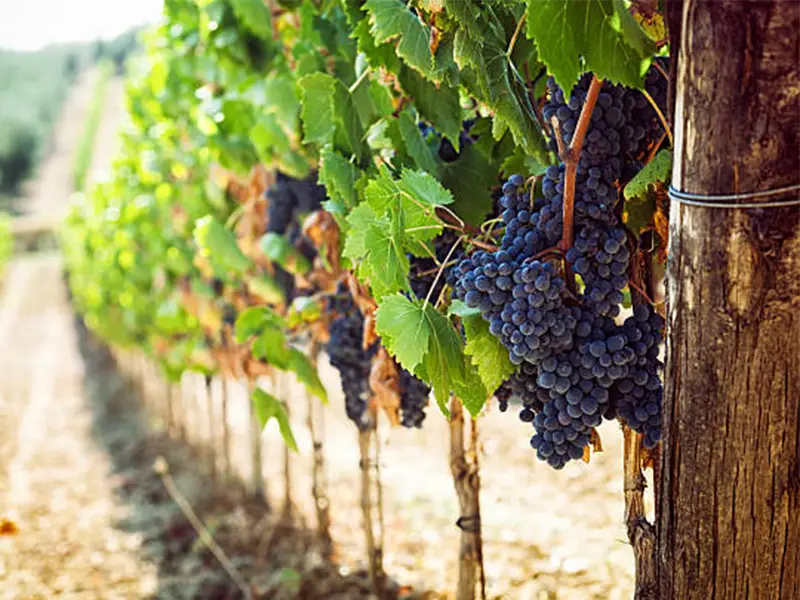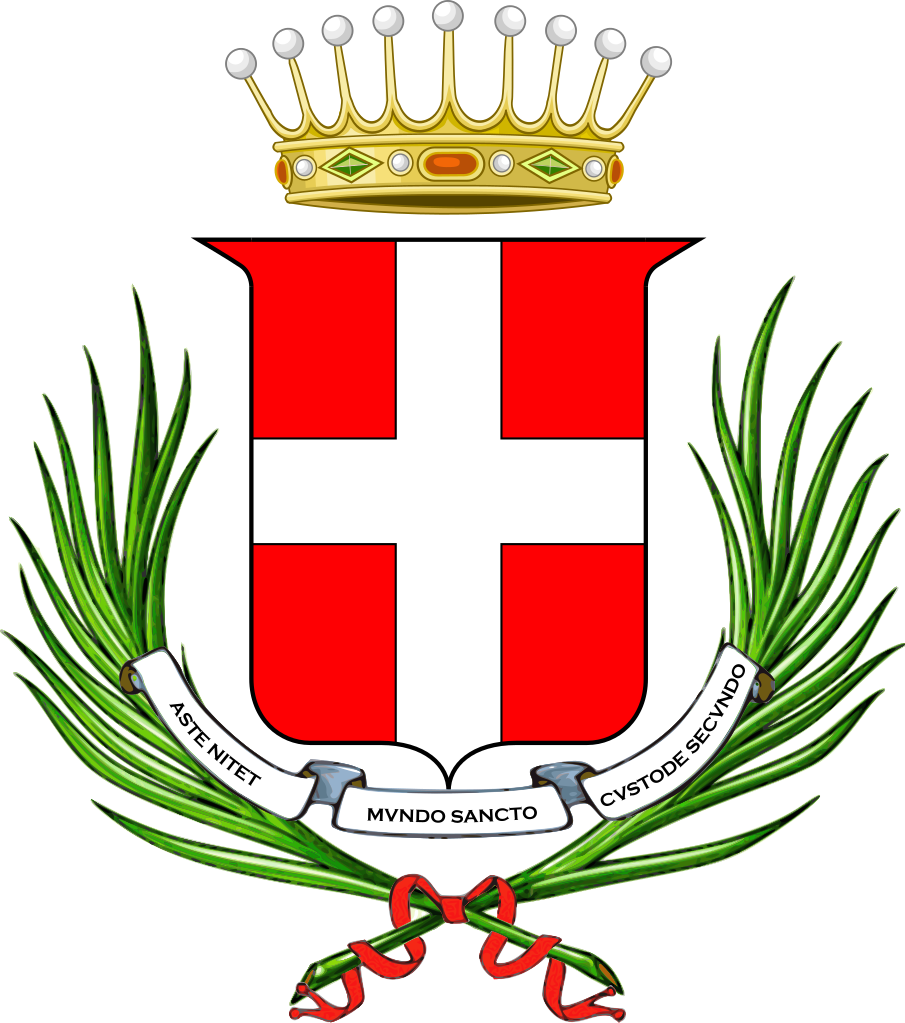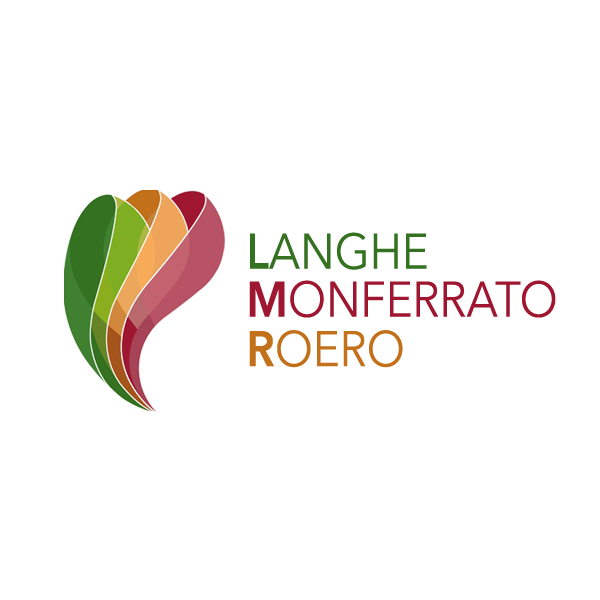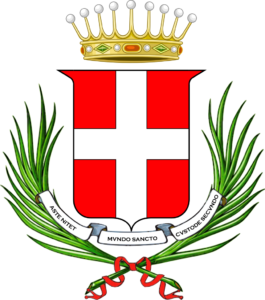The Other Wine Excellences: The D.O.C.G. and D.O.C. Red Wines of Asti
In addition to the Barbera d'Asti DOCG , the Asti area boasts other important red wines, well known in the national and international wine scene, all designated as Controlled Designation of Origin (in Italian, DOC) or Controlled and Guaranteed Designation of Origin (in Italian, DOCG) wines.
Barbera del Monferrato Superiore D.O.C.G.
The Barbera del Monferrato Superiore version requires aging for at least 14 months, including 6 in wooden barrels, and has a dark ruby red color, which tends to garnet red with aging.
The smell is intense and complex, with fruity notes of cherry, blackberry, and red fruits and possible spicy notes, tending to ethereal with aging. The flavor is dry and full, tannic and persistent.
It has been recognized the D.O.C.G. designation in 2011.
Minimum alcoholic strength: 13.0% vol.
Brachetto d’Acqui D.O.C.G.
Wine with an unmistakable perlage, aroma and flavor, it is produced mainly in the Asti area, with grapes from the blue-violet bunches of the Brachetto vine. You can find it in still, straw, or spumante sparkling version.
The color of Brachetto d’Acqui D.O.C.G. it is a pale ruby, tending to light garnet or pink. The spumante sparkling type is also rich in fine and persistent bubbles.
The scent is characterized by a strong aromatic and musky bouquet reminiscent of ripe grapes and freshly picked strawberries. The flavor is sweet and delicate but not cloying, with a subtle acidity that enhances the fragrance.
It is perfect to accompany desserts, in particular fruit pies with or without cream, spoon desserts, or Piedmont hazelnut cake. But it is also excellent with fruit, for example together with a fruit salad or with natural strawberries.
It has been recognized the D.O.C.G. designation in 2011.
Minimum alcoholic strength: 11.5% vol.
Nizza D.O.C.G.
The Barbera d'Asti Superiore Nizza D.O.C.G. was a sub-area of Barbera d'Asti D.O.C.G. . In 2014, it broke away from it becoming Nizza D.O.C.G., and the first bottles entered the market in 2016.
The Nizza D.O.C.G. it is produced with 100% Barbera grapes in 18 municipalities in the province of Asti. A still red wine, with structure, elegance and longevity, which is found in the Nizza D.O.C.G. and Nizza Riserva D.O.C.G versions.
The first type requires an aging period of 18 months, 6 of which in wood, while the Riserva type has a longer refinement of 30 months, 12 of which in wood.
The color is an intense ruby red, tending to garnet with aging.
The scent is ethereal, vinous, persistent, with notes of cherry, plum and berries that can evolve into more or less balsamic, spicy or floral notes. The aging in wood also brings hints of cinnamon, cocoa and licorice.
The taste on the palate is full, dry, harmonious, full-bodied, with a wealth of sweet and velvety tannins.
At the table, it is recommended in combination with traditional Piedmontese dishes or with braised red meats.
Minimum alcoholic strength: 13.0% vol.
Ruchè di Castagnole Monferrato D.O.C.G.
D.O.C. since 1987, the Ruchè di Castagnole Monferrato D.O.C.G. it is produced with grapes from the vine of the same name on the hills of the Castagnole Monferrato area and the six neighboring municipalities. It has always been the wine for great occasions, linked to the important moments in life.
The color is purplish red, with light purple reflections that tend to orange with aging.
The scent is persistent, intense and complex, with fruity and delicately aromatic scents, while the flavor is soft and with a good fullness, warm and harmonious, sometimes slightly tannic.
It is a wine suitable for any meal, but in particular it goes well with cured meats, game main courses and appetizers in general, but also with soups and moderately aged cheeses and with Piedmontese dishes such as Bagna Cauda , the Finanziera and Agnolotti .
It has been recognized the D.O.C.G. designation in 2010.
Minimum alcoholic strength: 12.0% vol.
Albugnano D.O.C.
Albugnano wine has a very limited production, produced from Nebbiolo grapes in a small area of Monferrato on the best hillsides of 4 municipalities (Albugnano, Pino d'Asti, Castelnuovo don Bosco and Passerano Marmorito).
It is found in the Rosso and Rosato types.
In the Red version, the style of Nebbiolo is evident: Color from ruby to elegant garnet more or less intense, delicate aroma of raspberry and wild strawberry, light floral and spicy notes, more complex if aged in oak barrels, and a dry, good body and pleasant persistence.
Recommended dishes as a pairing are first courses with tasty condiments, tasty meats (both white and red, grilled or in a pan) and aged cheeses.
It has been recognized as D.O.C. designation in 1997.
Minimum alcoholic strength: 11.5% vol.
Barbera del Monferrato D.O.C.
Barbera del Monferrato D.O.C. is an often still wine with a good body that satisfies the most demanding palates. Coming from the Barbera grape, it is produced in the provinces of Asti and Alessandria at altitudes ranging from 150 to 400 meters.
It exists in the still and sparkling types.
The sparkling one is a lively wine to be consumed young, with fruity aromas.
The color is ruby red, with more or less accentuated violet reflections. The taste is full, harmonious and sometimes lively and is suitable for many types of first courses, appetizers, cold cuts, mixed boiled meats, white and red meats and light roasts.
It has been recognized as D.O.C. in 1970.
Minimum alcoholic strength: 11.5% vol.
Cisterna d'Asti D.O.C.
Cisterna d'Asti is a wine produced with Croatina grapes, rather rustic and resistant, grown on the sunny hills of Cisterna d'Asti, on the western hilly ridge between Asti and Roero Alba.
It is found in the Cisterna d'Asti D.O.C. and Cisterna d'Asti Superiore D.O.C. types
The Superior type is characterized by a greater care of the selected grapes and by a longer aging, at least 10 months, sometimes in wooden barrels, at the discretion of the producers.
The color is ruby red, intense and caressed by lively purple reflections.
The olfactory profile is intense, fruity with notes of plum jam and red fruits or cherry and blackberry and on the palate the flavor is vinous, delicate, harmonious.
It is a wine of great structure and personality that goes well with typical Piedmontese dishes such as agnolotti and risottos, but also with main courses of meat and fatty salami.
It has been recognized as D.O.C. in 2002.
Minimum alcoholic strength: 11.5% vol. in the basic type and 12.0% vol. in the Superior version.
Dolcetto d'Asti D.O.C.
Dolcetto d'Asti is produced in 24 municipalities in the province of Asti from grapes of the ancient and indigenous Dolcetto vine, which has 11 designations of origin in Piedmont and has its own prestigious location in a limited area south of Asti.
It is a red wine for the whole meal, full, versatile and of undisputed pleasantness.
It is found in the Dolcetto d'Asti D.O.C. and Dolcetto d'Asti Superiore D.O.C. types.
The Superior type requires a minimum aging of 12 months.
The color is intense ruby with more or less accentuated violet reflections, tending to garnet with aging, while the intense and clear perfume is characterized by a hint of morello cherry and other red fruits, accompanied by a notable intensity and gustatory harmony, with a typically almond finish.
The flavor is dry, full, warm and delicately bitter in its aftertaste, elements that make it suitable for light dishes of Piedmontese cuisine.
It is suitable for any meal, in particular it goes well with cured meats and hams, appetizers and first courses, fresh or medium-aged hard cheeses.
It has been recognized as D.O.C. in 1974.
Minimum alcoholic strength: 11.5% vol. in the basic type and 12.5% vol. in the Superior version.
Freisa d’Asti D.O.C.
Produced with 100% Freisa grapes in almost all the municipalities of the province of Asti (with the exception of Villanova d’Asti and Cellarengo d’Asti), Freisa d’Asti finds its area of choice in the territory north of the province of Asti.
It exists in four main types: Freisa d’Asti D.O.C., Freisa d’Asti Frizzante D.O.C., Freisa d’Asti Spumante D.O.C. and Freisa d'Asti Superiore D.O.C.
The Superiore version requires an aging of 11 months, and the various versions can be aged with or without wooden barrels.
The color is often pale garnet red, tending towards garnet in the Superior type. The Spumante version, always ruby red, is studded with fine and persistent bubbles.
The aroma is intense, with a delicate aroma of rose and raspberry, which evolves into pleasant musky hints with aging, while the taste is dry, with a pleasant tannic sensation.
It is suitable for any meal, in particular it goes well with cold cuts and soft and semi-hard cheeses. It can also be made as a sweet wine to accompany fruit-based desserts.
It has been recognized as D.O.C. in 1972.
Minimum alcoholic strength: 11.0% vol. in the basic type and 11.5% vol. in the Superior version.
Grignolino d’Asti D.O.C.
The name most likely derives from the dialectal term "grignole", which refers to the grape seeds, abundant in its berries.
Produced from Grignolino grapes, a particularly demanding vine in terms of soil and climate, difficult to cultivate and vinify and discontinuous in production. A vine that, however, gives many satisfactions, with the production of a wine that avoids half measures: either you love it or you ignore it.
With its color halfway between red and rosé, and its delicately herbaceous scent with fruity notes of hazelnut and morello cherry and undergrowth, Grignolino D.O.C. looks like an austere and original still wine.
The taste on the palate is dry, moderately warm and bitter.
It goes well with mixed hors d'oeuvres based on cured meats, broth and dry soups, first courses such as agnolotti del plìn with roast sauce, Piedmontese mixed fry, roasted white meats or fish-based dishes.
It has been recognized as D.O.C. in 1973.
Minimum alcoholic strength: 11.0% vol.
Malvasia di Casorzo d’Asti D.O.C.
The Malvasia di Casorzo D.O.C. is produced in the municipalities of Casorzo and Grazzano Badoglio in the province of Asti and in some provinces of the area of Alessandria.It is a sweet wine, to be consumed young, created with a particular variety of black berried Malvasia.
You can find it as Malvasia di Casorzo d’Asti D.O.C., Malvasia di Casorzo d’Asti D.O.C. Passito and Malvasia di Casorzo d'Asti Spumante D.O.C.
The color ranges from ruby red to pink, more intense in the Passito (straw wine) type.
Its aromatic scent is sweet, soft and harmonious and releases fruity aromas of raspberry and ripe cherry.
The classic and Spumante sparkling versions, with a low alcohol content, can be enjoyed at any time of day. To be served very fresh, it is a perfect match for all desserts, biscuits, dried fruit, and fruit salads.
It has been recognized as D.O.C. in 1968.
Minimum alcoholic strength: 10.5% vol. in the basic type, 15.0% vol. in the Passito type and 11.0% vol. in the Superior typology.
Malvasia di Castelnuovo Don Bosco D.O.C.
Produced with Malvasia di Schierano (or "short bunch" Malvasia) grown on the Asti hills facing the Turin area
You can find it as Malvasia di Castelnuovo Don Bosco D.O.C. and Malvasia di Castelnuovo Don Bosco Spumante D.O.C.
The color varies from ruby red to pink, studded with fine and persistent bubbles in the sparkling wine type.
The scent is delicate and characteristic: A cherry wine, with an aromatic scent reminiscent of ripe grapes and a sweet, graceful, also aromatic flavor.
It is a refined accompaniment to fruit-based desserts and dry pasta.
It has been recognized as the D.O.C. in 1974.
Minimum alcoholic strength: 10.5% vol. in the basic type and 11.0% vol. in the Spumante type.









